Back to top: Figurines
Human figurines
In J6 three human figurines were collected during excavations. None of them is complete. A typologycal analysis of the human figirines is presented in the book of Yasmine Mahmood, where all figurines are presended in a catalogue.
|
Only the upper part of the human figurine i24 is preserved, the head and legs are missing. The arms are represented by short knobs. A necklace is attached to the neck. The figurine was found in a lense f243 of pottery and pebbles dated to the late Mittani period.
|
|
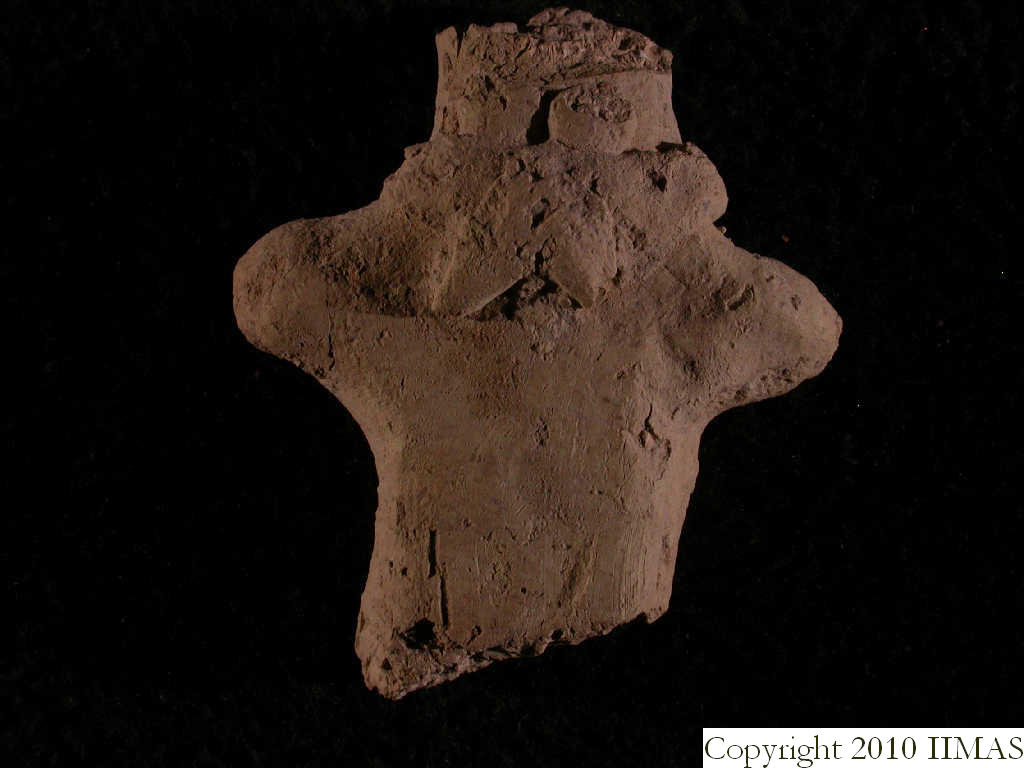 i24 i24 |
|
This torso of a human figurine q94.1 has no special features. However, it is painted in okra on the back. The figurine was found in the dirt removed from the sides and bottom of the trench of Units C2 and B6 f29, therefore has no stratigraphic context.
|
|
 q94.1 q94.1 |
|
A torso of a male naked figurine q210.1. The head is missing, but on the neck are traces of bitumen (black colour). The arms are knob shaped and the beginning of the legs are opened, as the figure was supposed to be mounted on something, possibly a horse or on top of a chariot. Similar figurines were found in the excavation of Unit C2 and published in Bianchi-Wising 2009, 15-16. The figurine q210.1 was found in f126, dated to Mittani.
|
|
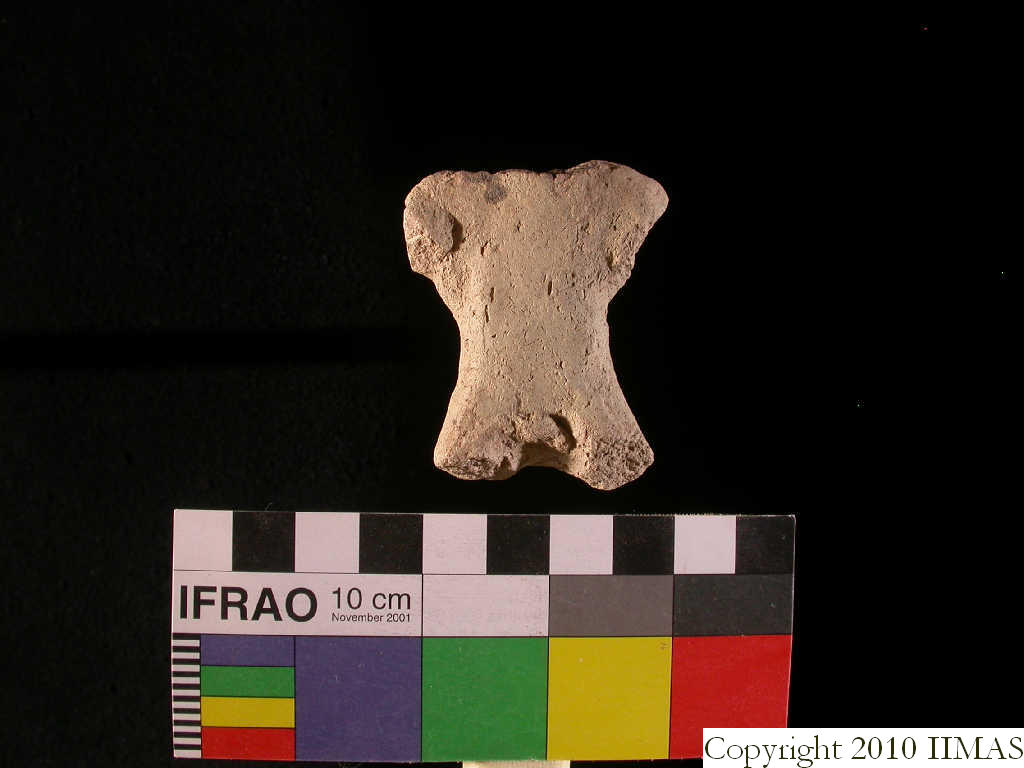 q210.1 q210.1 |
|
The body of figurine q477.1 is preserved only for the lower part. Head, arms and upper portion of the body are missing. The dress is decorated with vertical incised lines made on the wet clay. Probably a female figurine, given the accentuated flanks. The figurine was found in f322, the glacis at the lower portion of wall f218.
|
|
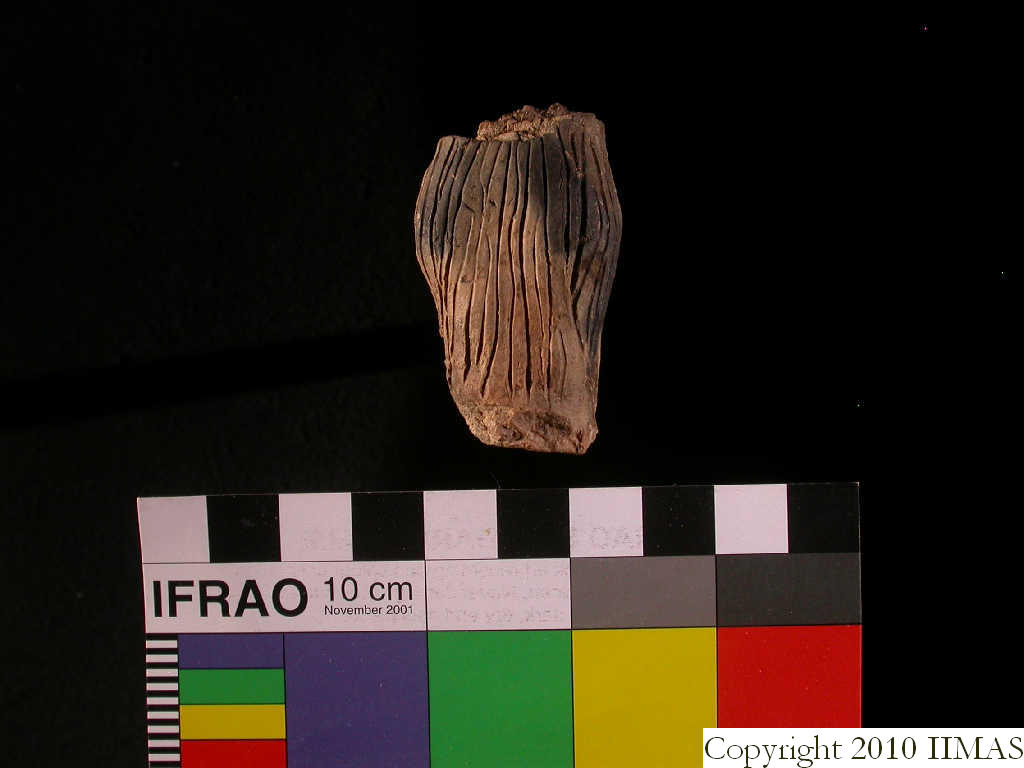 q210.1 q210.1 |
Back to top: Figurines
Animal figurines
Out of a total of 43 animal figures, most of which are fragments of bodies, heads or legs, the best preserved ones or those with special features are presented here. The typology and gerera of animal figurines were defined by Rick Hauser in Reading Figurines, 2007.
Back to top: Figurines
Ovis and capra
Here I make no distinction on ovis and capra, since is quite difficoult to distinguish these animals on the base of few figurines preserved in Unit J6. The characteristics of the ovis type are: the torso is almost as wide as the forequarters and as the hindquarters, the tail is hanging, the fell is generally represented by incised lines, the presence of the typical spiral or concentric circle horns of the natural animal. In J6 we have three good examples of the type ovis represented by q22.1, q42.3 and q128.3.
|
q42.3 is the body of a sheep without legs and head. The tail hanging and the fell is incised with lines covering the whole body. The figurine was found in the dirt removed from the sides and bottom of the trench of Units C2 and B6 f29, therefore has no stratigraphic context. |
|
 |
 q42.3 q42.3 |
|
q22.2 is the front half of a sheep, recognisable by the typical representation of the fell, with incised lines starting from the preserved part of the shoulder and continuing on the back. The figurine was found in the upper part of accumulations, directly under the topsoil. |
|
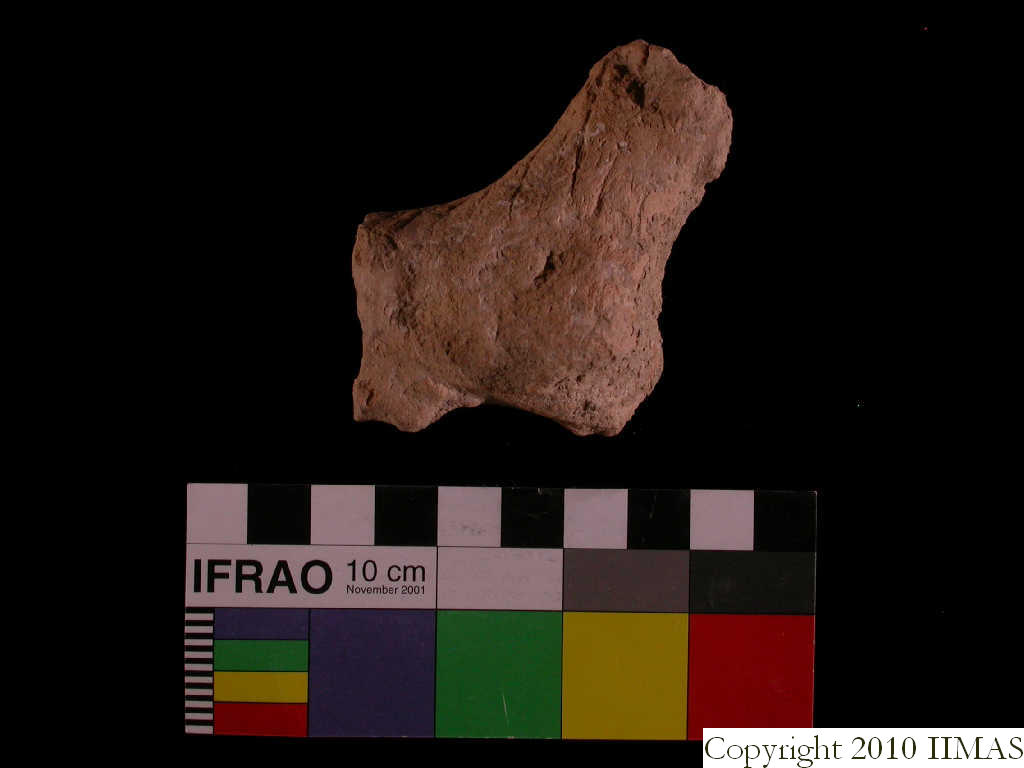 q22.2 q22.2 |
|
q128.3 is the head of a sheep. Both spiral horns are preserved. The eyes and nostrils are indicated by a circular incision and the mouth is indicated by a transverse incision. The fell is renderen by incised lines on the neck. The figurine was found in the brickfall f74, dated to the Mittani period. |
|
 |
 q128.3 q128.3 |
Back to top: Figurines
Equus
Typical feature of equids is the mane, the long tail, the genitals. Rick Hauser estabilished idealized proportions for equids, serving to distinguish them from other animal representations in the figurine corpus: “forequarters are less wide than the hindquarters, the torso is less wide than either the forequarters or the hindquarters, body-length is greater than or equal to twice the width of the hindquarters, the length of the body is a little less than twice as long as the neck. Muzzle is rectangular in section, snout is frequently pinched and triangular in section, neck is long and foward from body, torso is lean, buttocks are fused and sometimes recessed” (Hauser 1998, 66-67). In some cases we observe certain characteristics of domestication.
|
The most complete example of equus in Unit J6 is i16. It is a very small handmade figurine, 3,2 cm long and 2,1 cm wide, with the features of a domesticated horse. The beginning of the tail is preserved, the snout is rectangular in section. The front legs are slightly spread and pointed fowards, the hindquarters are stretched backwards. The figurine was found in glacis of the Akkadian Period f164. |
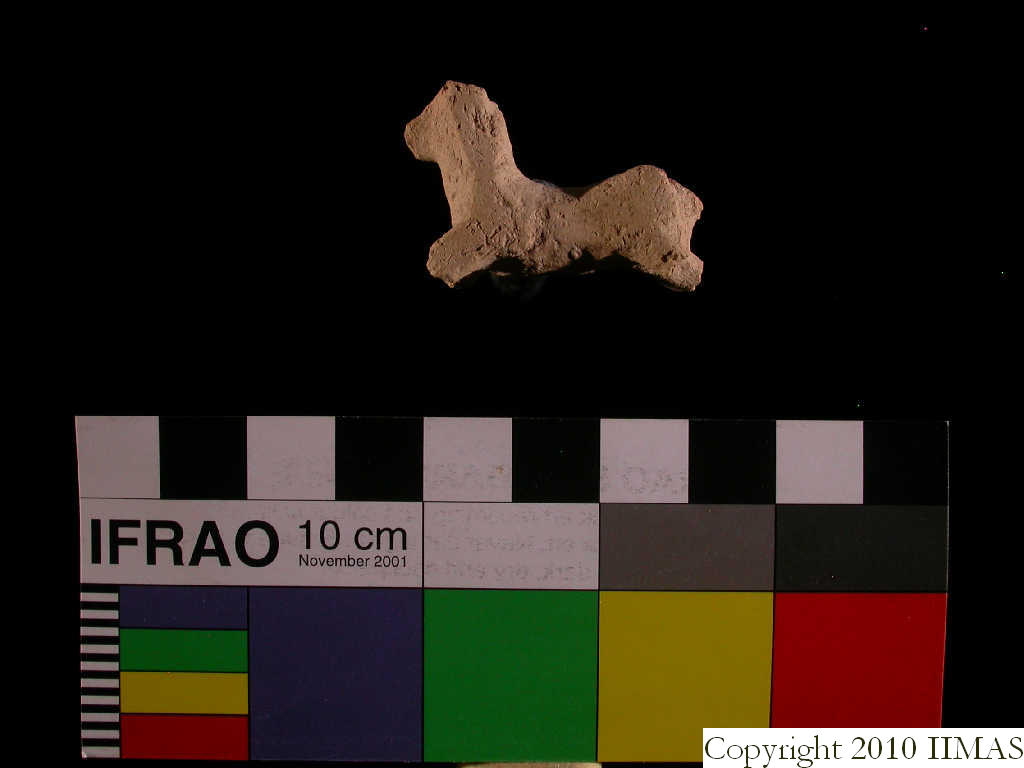 i16 i16 |
|
A nice example of a head of a horse is represented by q284.3. The head is very carefully shaped. The mane is realized by pressing with the fingers the wet clay. The ears are not preserved. The muzzle is rectangular in section and the nostrils are highlighted with a perforation crossing the muzzle. The perforation must have been used to insert the reins. Another perforation is preserved at the base of the remainig mane. There are traces of red painting on the neck. A similar head of a horse is represented by q261.1. |
 q284.3 q284.3 |
![q261.1]() |
|
A fragment of the body of a horse q367.1 is decorated with mall circles ordered in lines crossing each other on the back. |
|
 q367.1 q367.1 |
Back to top: Figurines
Figurines on wheels
A small number of perforated animal figurines have been found in Unit J6. The figurines have no legs and the object terminates below the perforation. The perforation was made for the shaft of the wheels.
|
The anterior part of figurine q178.1 possibly a sheep or a capra. The horns are broken, the muzzle tapers sharply, the eyes are small holes. Directly under the neck is a perforation of about 60 cm in diameter. At the beginning of the legs the second perforation of about 80 cm in diameter, where are supposed to be inserted the wheels. It could be a toy. The upper hole was used to insert a string to pull the animal with wheels. A similar figurine was found in a child grave in Unit C2 (MZ99C2-i0478, Bianchi-Wissing 2009, 44, 141). |
|
 q178.1 q178.1 |
Back to top: Figurines